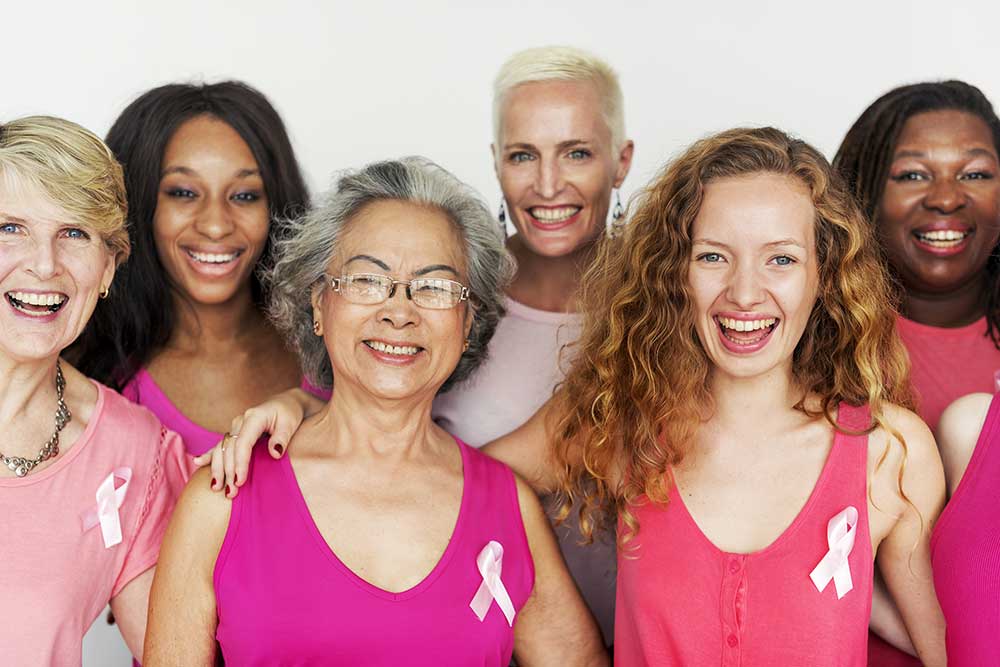
Learn about the symptoms of breast cancer and what to look for to protect yourself against this disease.
Breast cancer is one of the most deadly cancers for women, second only to lung cancer. It’s also the most common cancer in women, with an average 1 in 8 lifetime risk of developing the disease. Here are 6 breast cancer symptoms to look out for to help protect yourself.
What are the symptoms of breast cancer?
Breast cancer symptoms can vary from person to person, and some people may not experience any symptoms at all. Women of all ages, though, should be familiar with how their breasts look and feel and should report anything unusual to their doctors. And although men may not think about developing breast cancer, they are also at risk. If you notice any of the following signs and symptoms of breast cancer, let your doctor know right away.
1. A new lump in the breast
The most common symptom of breast cancer is a lump or mass in the breast or armpit. It can be painless, hard and have uneven edges, or it can be tender, round and soft. Many women have naturally lumpy breasts, and your breasts may also feel different when you have your period, while pregnant or breastfeeding; when taking certain medications, gaining or losing weight; or with aging. But if you’re familiar with your breasts, you’ll be more likely to notice any physical changes or abnormalities.
2. Nipple discharge
Nipple discharge, when you’re not breastfeeding or pregnant, is a potential sign of breast cancer. Although this most often has a benign cause (even chaffing from clothes or undergarments can cause discharge), it’s still one of the important symptoms of breast cancer to be aware of. Nipple discharge may be abnormal if it happens suddenly, is only in one breast or is bloody.
3. Unusual swelling
If there is no reason for your breasts to swell — such as the hormonal changes that occur when getting your period or during pregnancy, an infection from breastfeeding, or an injury — a change in the size or shape of your breasts could be a sign of breast cancer. Also, be aware of swelling in your armpit or near your collarbone, which could indicate breast cancer that has spread to the lymph nodes. Even if there isn’t a lump you can feel, and even though other conditions may cause breast swelling as well, this is still a change worth telling your doctor about.
4. New nipple retraction
Changes in the nipples, such as retraction, may be caused by aging, but they can also be a possible sign of breast cancer. If you notice your nipple is now turning inward and staying that way, when it previously did not, you should make an appointment with your doctor to determine if there’s an issue. However, if your nipples have always looked inverted, it’s generally not a cause for concern.
5. Redness, peeling or flaking of the skin on your breast or nipple
Any change in the condition of the skin of your breast or nipple could indicate an abnormality underneath, including breast cancer. If you notice red, scaly, peeling or flaking skin, talk to your doctor. Other abnormal skin signs are breast skin that looks thickened or appears dimpled or puckered, like an orange peel. Although this dimpling is common with the breast infection mastitis (which usually affects breastfeeding women but can occur when not breastfeeding as well), it’s still important to have it checked out, because some types of breast cancer can mimic this condition.
6. Pain in the breast
Although most breast cancer is painless, it’s possible for the disease to cause pain in the breast or nipple area. In any case, you certainly don’t want to be in pain, so it’s worth talking to your doctor to determine the cause of the pain and treatment options.
When should you start breast cancer screenings?
While it’s beneficial to be aware of the potential early symptoms of breast cancer, the best way to catch the disease at an early stage is with regular screening.
“The most important piece of advice for women is to get your screening mammograms,” says Maria Nelson, MD, a breast surgeon at Keck Medicine of USC and clinical associate professor of surgery at the Keck School of Medicine of USC.
Medical organizations, including the American Cancer Society, the U.S. Preventive Services Task Force and the American College of Obstetricians and Gynecologists, all have slightly different recommendations for when to start mammograms. Your doctor can help you evaluate risk factors, including personal and family history of the disease, to determine when you should start breast cancer screenings and how often to schedule your visits.
Ultimately, you know your body best: If you think something’s not right, make an appointment with your physician to get checked out.
Topics
